Chuvash national costume
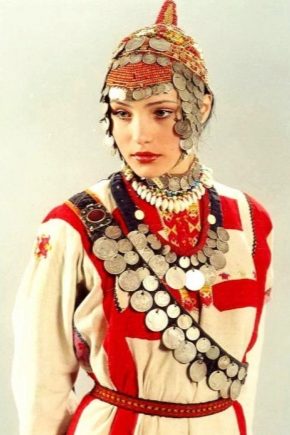
The Chuvash national costume reflects the history of development, climatic conditions of existence and figurative thinking of the Chuvash ethnos.

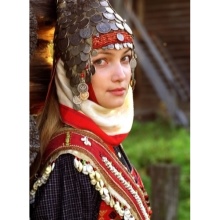
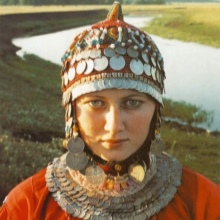
A bit of history
An important role in the formation of the costume was played by the place of residence of the Chuvash, who borrowed the details of the attire of their neighbors. The costume of the riding Chuvashs (viryal) of the Cheboksary region was similar to the costume of the Finno-Ugric peoples of Russia - the Mari because of the brevity of the structural elements. In the costume of the lower Chuvashs (Anatri), who neighbored the Tatars, frills were used in sewing dresses, the main color of the apron was red. Towels and aprons had decorative crocheted embroidery in blue, green and yellow threads.
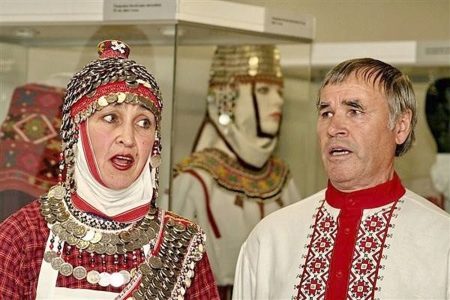
There is a connection between the costume of the Chuvashs of the Samara region and the Mordovian costume, expressed in the similarity of the surpan headdress and the breastplate and the use of colors that are not typical for the Chuvash costume of the 19th century. - light green, pink, and yellow.
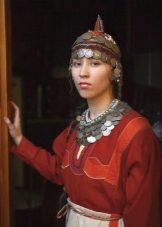
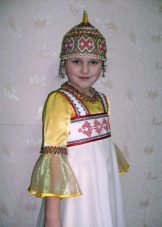
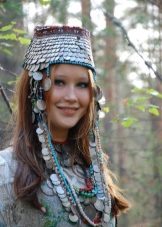

The costume told about the status, marital status, property status, age of the owner.
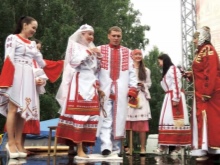


Peculiarities
Colors and shades
One of the main colors used in costumes was white, symbolizing sacred purity. A white shirt was always worn on holidays.Red color in combination with white was also considered a symbol of purity, therefore it was often found in the motives of traditional clothes. Red symbolized life, all the seams on the clothes were covered with braid of this color.
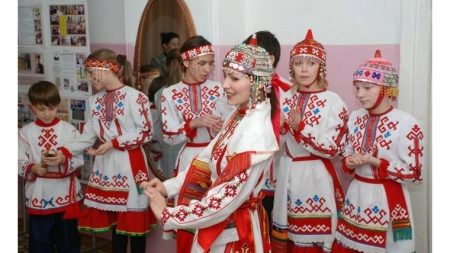
In the 19th century The Chuvash used homespun motley in the production of clothes - a fabric of multi-colored threads. They began to dress in robes from it for holidays and field work. This caused discontent among the older generation and in some cases, for example, during the flowering of rye, there was a strict ban on wearing motley clothes. For non-compliance with the ban, the violator was punished - dousing 41 with a bucket of cold water.
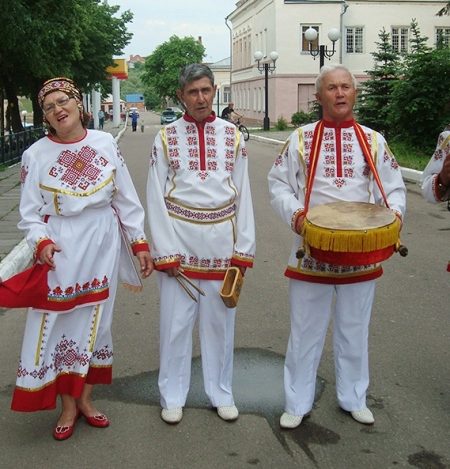
fabrics
Until 1850, the Chuvash produced fabrics and made vegetable dyes at home. Yarn dyeing took a long time, so the impractical white remained the main color of the suit. And as soon as aniline dyes appeared in anatri, which facilitated the dyeing of yarn, the production of motley began. In 1850, outfits from it practically replaced white robes. In viryal costumes, motley was not used.
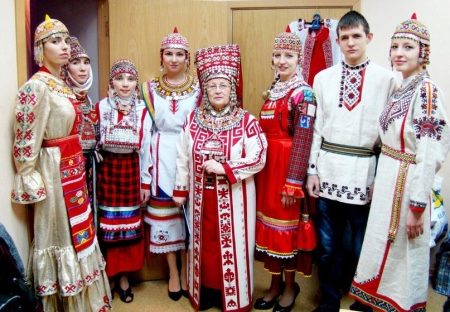
Croy
The white kepe shirt was present in the female and male version of the suit. The cut was simple - hemp canvas was folded in half, inserts and wedges were sewn into the sidewalls, which expanded the shirt downwards. Narrow and straight sleeves 55-60 cm long were sewn to the shirt at an angle of 90 degrees, for freedom of movement a square gusset was sewn into the sleeve.
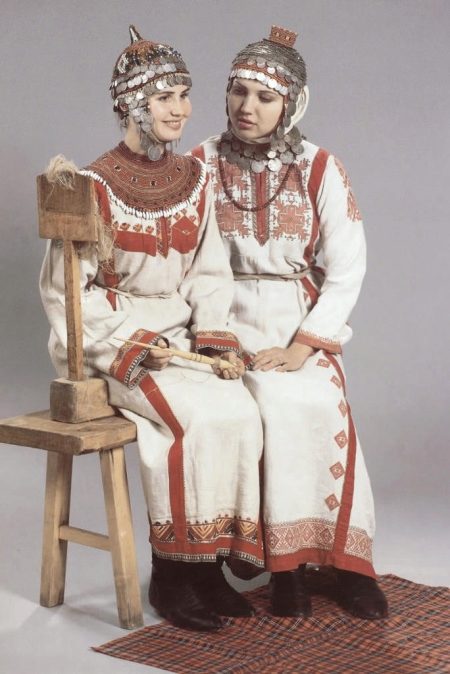
Women's shirts were cut about 120 cm long with a central slit on the chest, and men's - 80 cm, also with a slit on the chest, but on the right side.
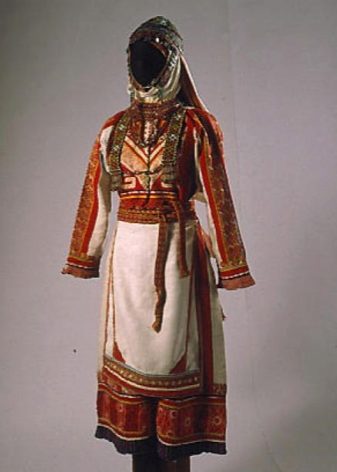

Varieties
Female
Women's shirts were embroidered on the left and right sides of the slit on the chest, on the sleeves, along the seams and hem. The fundamental color of the embroidery was red, and the outlines were made with black threads.The embroidery came across yellow, green, and, less often, dark blue. Embroidery on the chest was made in the form of rosettes and rhombuses.

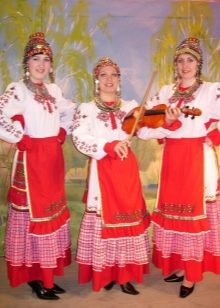
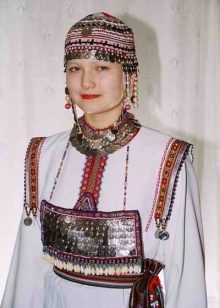
A complex asymmetrical embroidery motif was present on the shirts of married women. The hem was embroidered modestly and rhythmically - stripes of various sizes, geometric patterns and stripes interspersed on it.
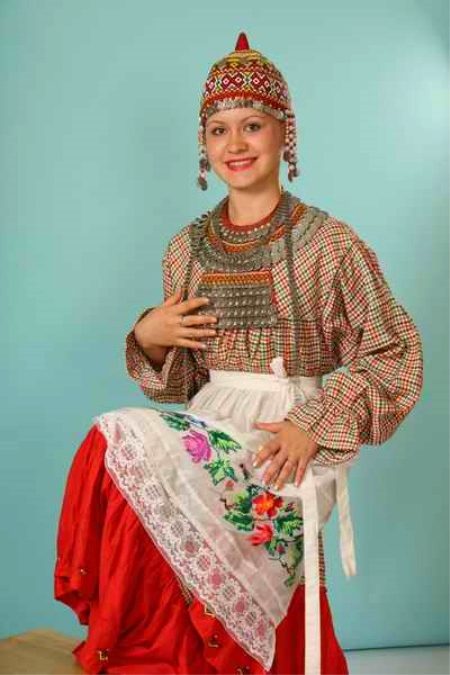
Gaiters were worn on weekdays and holidays. In their manufacture, silk and wool threads were used, figures resembling trees, leaves, flowers were embroidered, stripes were used. The legguards were decorated with brown (or blue) fringe, which gave liveliness to the costume while moving.
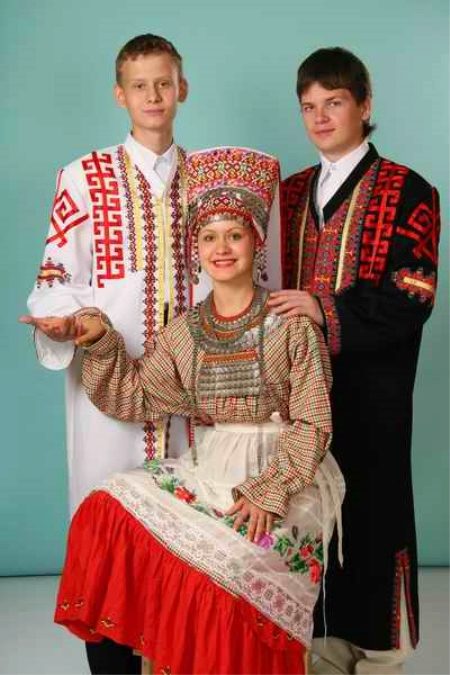
The girl's costume looked modest, it had a little embroidery, there were no chest patterns (keske), sleeve patterns and shoulder pads on the shirt. It was believed that a nondescript, but neat attire more emphasizes the beauty and charm of a young woman.

Headdresses - surpan, masmak, khushpu, pus tutri, were worn by married women. The headdress of a young woman was called tukhya.
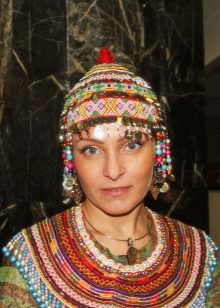
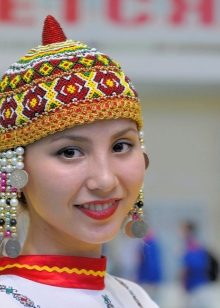
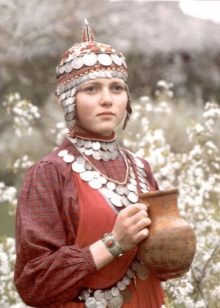
Children's
The children's costume lacked high-status decoration and luxurious embroidery. Shirts were simple, made of cotton or linen, pants for small children were sewn with a cutout, pants for older children were sewn without a cutout. They also sewed dresses and sheepskin coats.
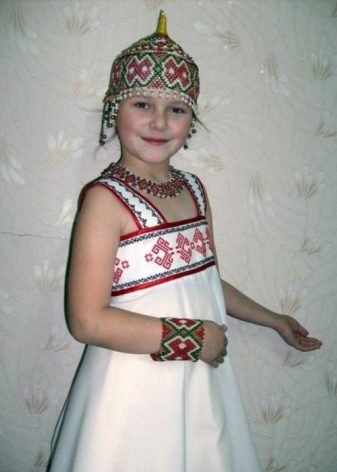
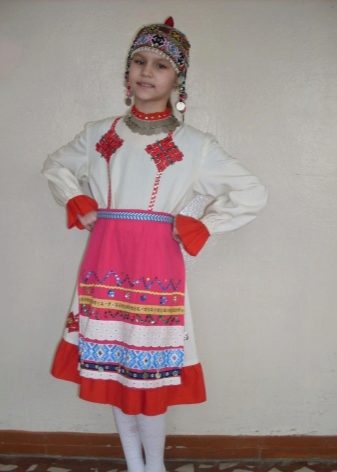
The girls' elegant clothes were simple, they were decorated with ready-made braid sewn on the hem, or with an unpretentious pattern. Simple ornaments made of beads and braid were put on the head. Older girls could wear an embroidered beaded ornament (sara) attached to the belt at the back.
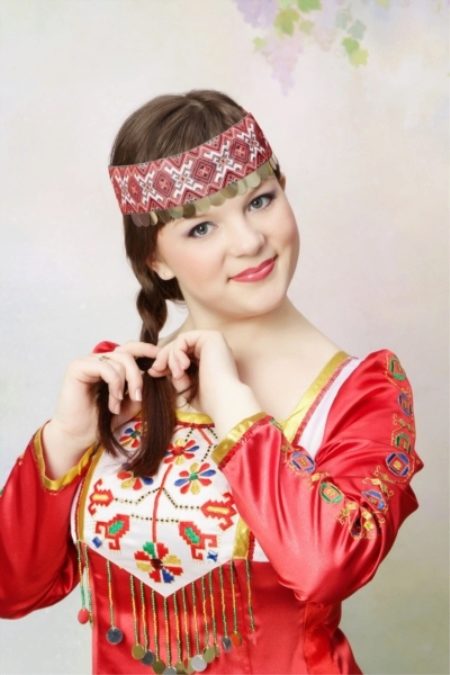
The collar of the boy's shirt was decorated with a monochromatic ornament.
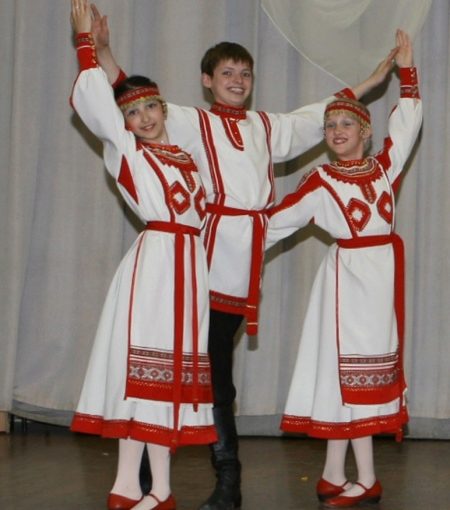
Male
The men's costume included a kepe shirt, pants (yem), boots, felt boots, a hat and a cap. It was much more modestly embroidered than the women's, but the decor was heavier.Signs of the sky on the shoulders, fire on the chest emphasized masculinity and significance.
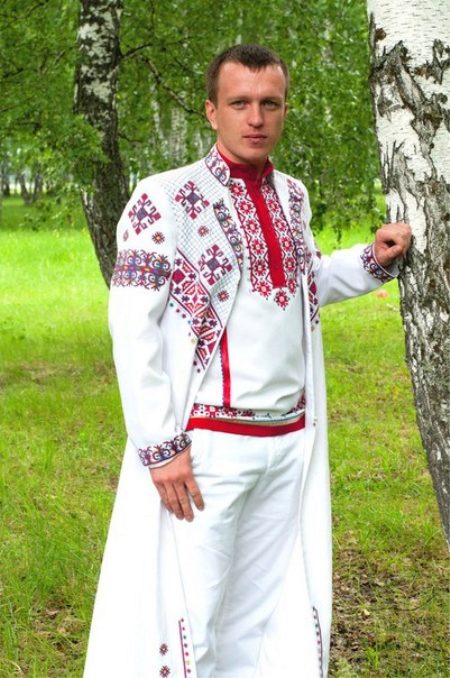
A dressing gown made of white homespun fabric was called a shupar. Signs of fire were embroidered on it and silk stripes were used. Embroidery was located on the chest, shoulders, back, sleeves, hem, but the ornament practically did not copy the ornament of the women's costume. Embroidery figures depicted horses, plants, human hands. Particular attention was paid to colorful patterns on the back, and a sign of the border of the worlds was embroidered on the sleeve.
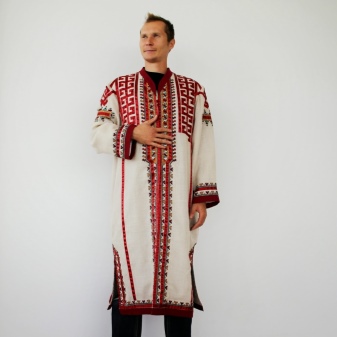
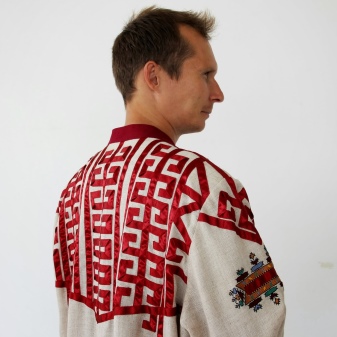
The men's costume was complemented by cloth hats with fields, fur hats of seleks. The embroidery on them mainly depicted the sun and stars.
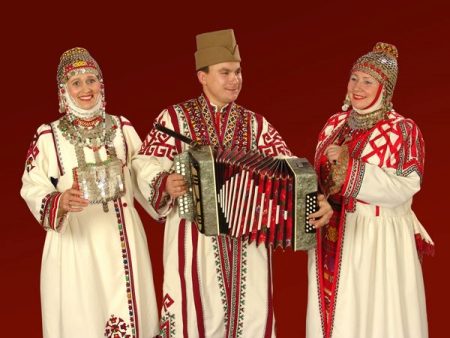
Young guys wore a scarf on their shoulders, as a symbol that the bride was chosen and the wedding would take place soon. The girl applied all her skills to making a scarf and passed it on to the guy, accepting the marriage proposal. The groom wore a scarf during the wedding.
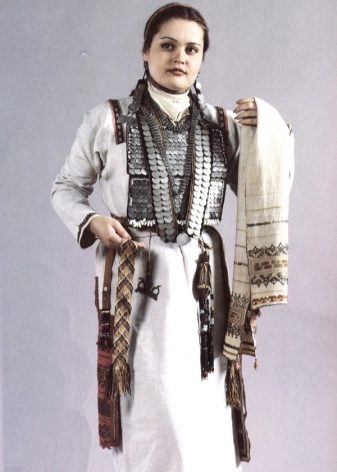
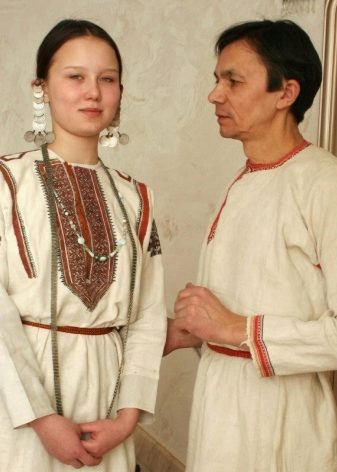
The beauty of the wedding dress
The bride's attire was embroidered with beads, shells and coins in the form of geometric patterns, the hat was especially richly decorated.
The bride's shirt, apron and outerwear were decorated with embroidery. The bride put on rings, bracelets, neck, chest and waist pendants, a purse and a small mirror. All vestments had a weight of about 15 kg.
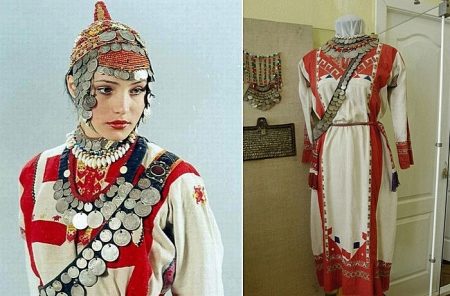
An important detail of the wedding costume was a large white veil - perkenchek, decorated with embroidery along the edges. The future wife at the wedding was under it for some time, and then the perkenchek was removed and the bride was dressed in the outfit of a married woman.

The groom wore an embroidered shirt and caftan, a wide blue (or green) belt, boots, gloves, a fur hat with a coin on his forehead.

Accessories, shoes
Women's costume included neck, shoulder, chest and waist decorations.Once they had the functions of amulets and talismans, but over time they simply began to indicate the age and social status of the owner. For example, the heavier and more varied the khushpu embroidery was, the more prosperous the owner was considered.
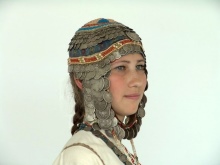
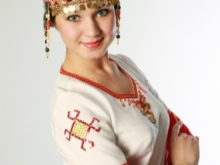

The fair sex wore silver jewelry with beads (shulkeme). Women adorned themselves with the ama breastplate, a type of which was the pus hyse breastplate (with a part located on the back).
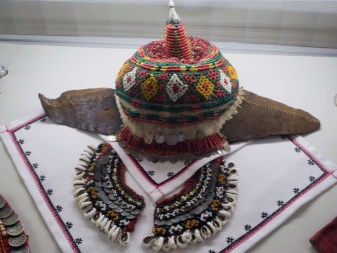
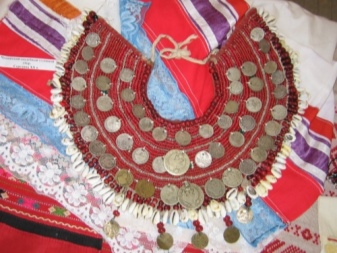
Tevets decorated with silver and beads were also worn over the shoulder. Women complemented their wedding attire, and girls - a festive look. The decoration of the girls was an uka necklace with a base made of canvas or leather, embroidered with beads, beads and coins.
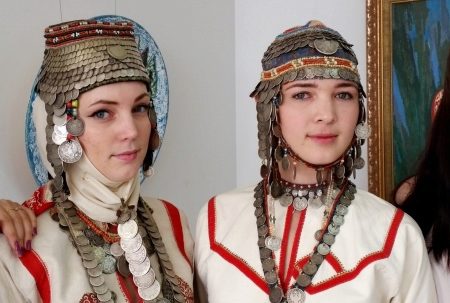
The decoration of a married woman - a dry necklace - consisted of a thick mesh of beads of various sizes, and sewn on coins.
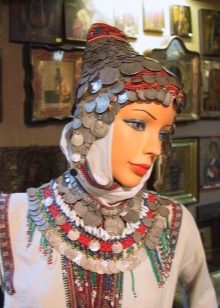
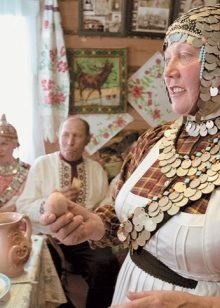
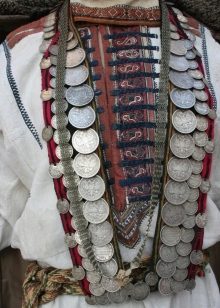
In ordinary life, the virials wore bast shoes woven from lime bast (zapata) with black onuchs, and anatri with white stockings (tala chalha). On holidays, they wore boots made of leather or shoes, and on viryaly - high boots that gathered into an accordion. In 1900, women began to produce high boots made of leather with lacing. Felt boots were used as winter footwear.
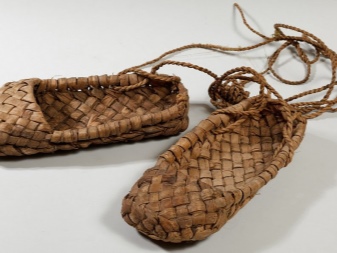
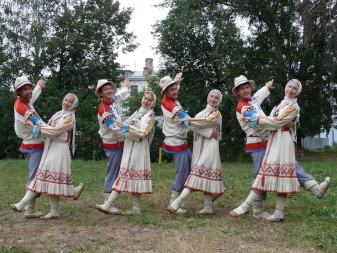
Modern models
At the beginning of the twentieth century. due to the mass production of clothing, the national costume faded into the background. But in the villages, the costume has retained its relevance to this day as an attire for festivities and rituals. It is actively used in concert activities as clothing for performances by folklore groups.
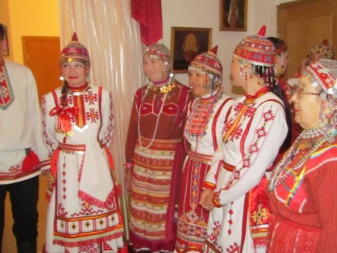

Today, fashion designers do not copy the traditional costume when creating clothes, but use associative images and its elements, trying to complete the details of traditional patterns and convey the value of handmade when creating a costume.
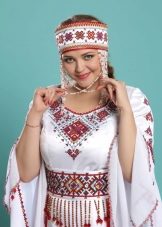

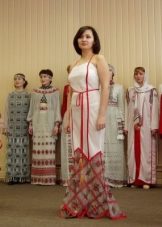
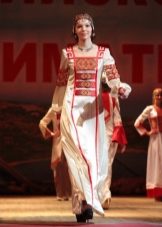






















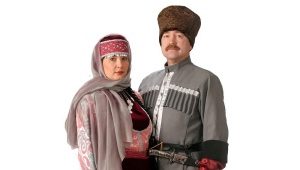
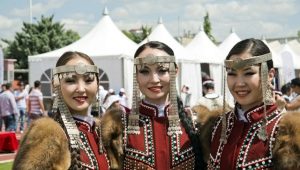




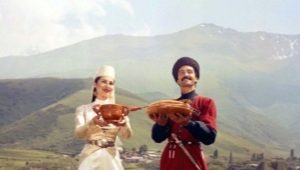
Everything is well written, everything I wanted.
Everything is very beautiful.
Great!